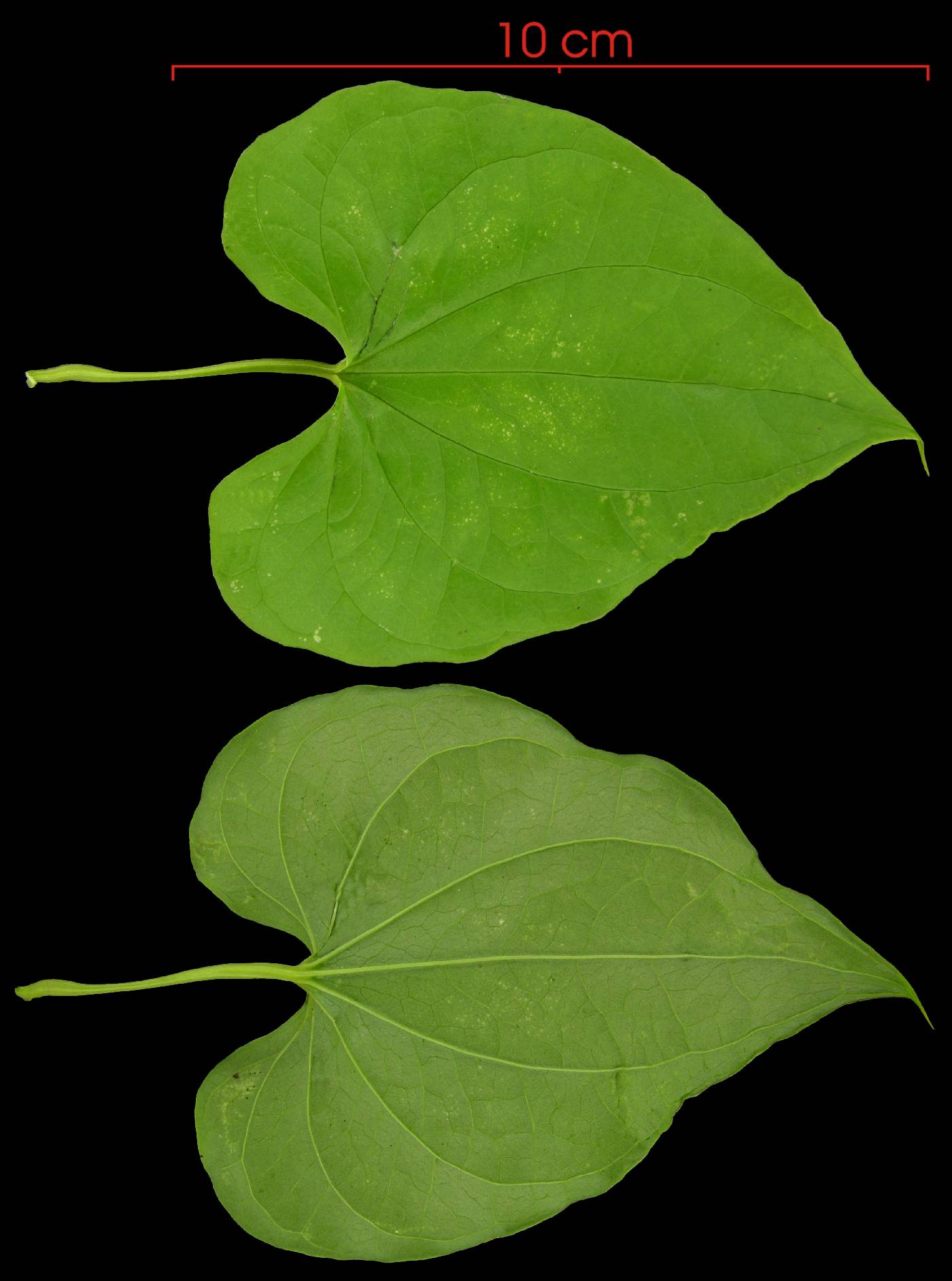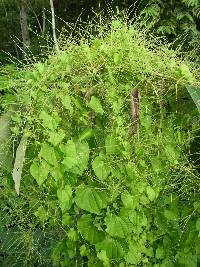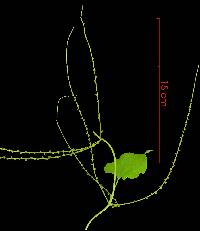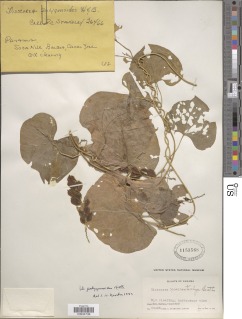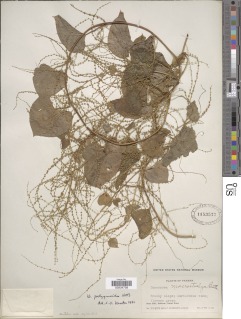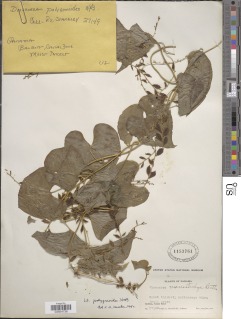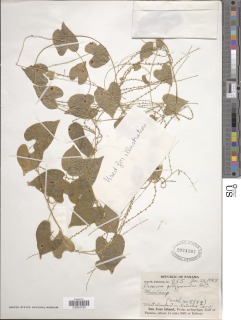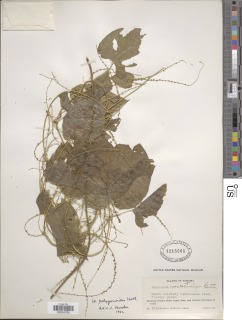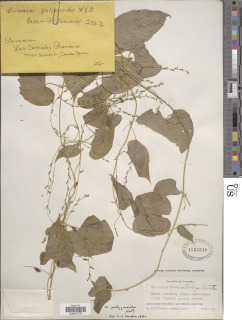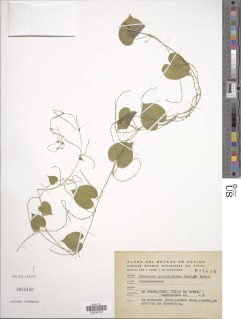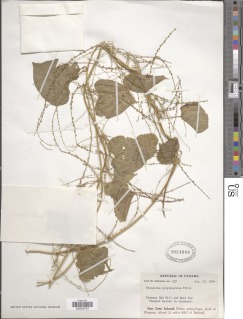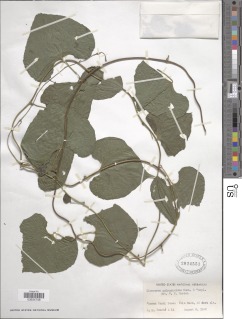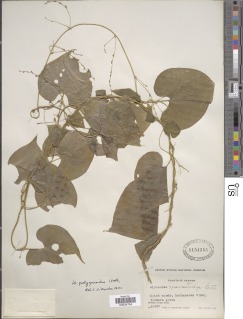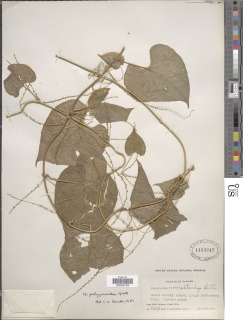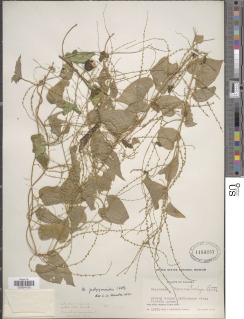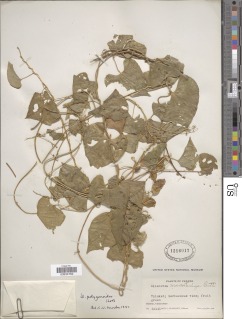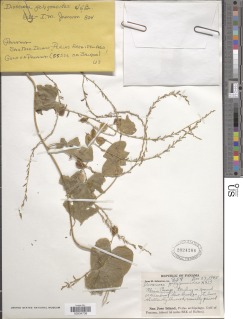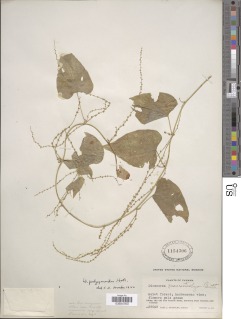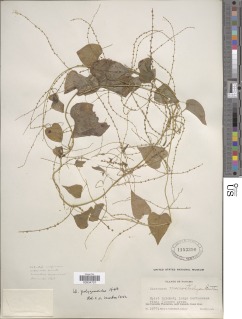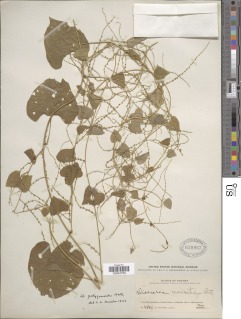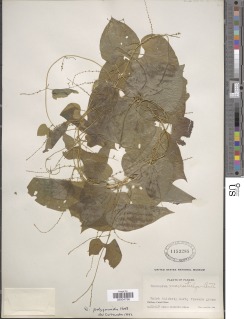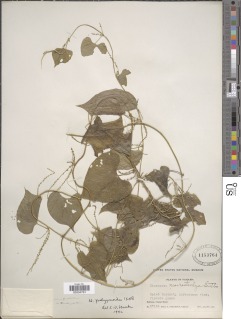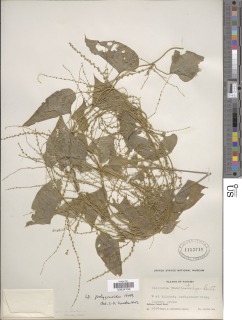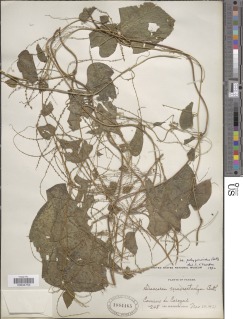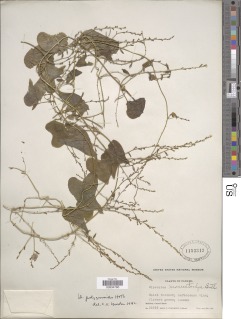

|
|
|
|
Family: Dioscoreaceae
Mata-Gallina
|
Dioecious twining vine; stems, petioles, and inflorescences weakly ribbed, the ribs minutely scabrid; stems twisting to the left. Leaves alternate; petioles 1.5-6 cm long; blades ovate-orbicular to ovate, narrowly acuminate, sometimes falcate, deeply to broadly cordate at base, mostly 4-11 cm long, 2.5-8.5 cm broad, obscurely pellucid-lineolate, eglandular; veins (9)11, palmate, the cauline veins 3, the veins of lower surface often minutely scabrid (especially after drying); juvenile plants often with a single ovate-cordate leaf arising from an underground stem, the petiole to 1.3 cm long, the blade often mottled with gray; leaves of the juvenile climbing stems larger than on adults, to 22 cm long and 13.5 cm wide, the petiole to 8 cm long. Inflorescences axillary; rachises minutely scabrid; flowers to 2 mm broad; staminate spikes 2-4 in leaf axils,10-30 cm long, usually unbranched, sparsley flowered; flowers greenish, sessile, in few-flowered fascicles, the perianth segments ovate, 1-1.3 mm long, united in lower half, each with a +/- prominent medial vein; stamens 3, inserted on perianth; anthers extrorse, separated by a broad connective; staminodia 3, bifid at apex, about as long as stamens; ovary rudiment conspicuous. Pistillate spikes solitary or paired, unbranched, less than 15 cm long, the flowers sessile; stamens lacking; ovary ca 3 mm long; styles 3, minute, conical; stigmas bifid. Capsules 3-winged, obovate to oval, 2.5-3 cm long, to ca 2 cm wide, glabrous; seeds winged all around. Croat 12877, Shattuck 582. Occasional, in the forest and at the margins of clearings; probably about as abundant as D. urophylla with which it is confused. Seasonal behavior uncertain. Apparently flowers in the early dry season (December to February); the fruiting season is not known. Standley cited Shattuck 582, which is this species, as D. macrostachya. Morton in the Flora of Panama (1945) reported that the species lacks pellucid lineations. Though they are not as prominent as in D. urophylla, pellucid lineations are usually present, at least after the specimens are dried. |

